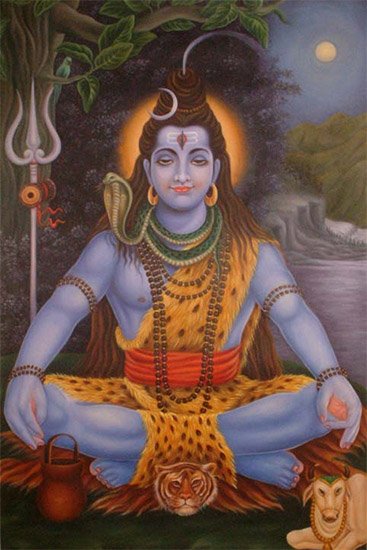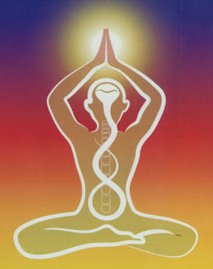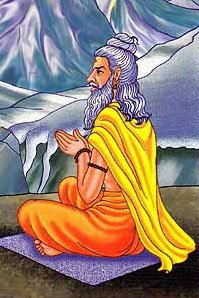Asanasthita, Āsanasthita, Asana-sthita: 3 definitions
Introduction:
Asanasthita means something in Hinduism, Sanskrit. If you want to know the exact meaning, history, etymology or English translation of this term then check out the descriptions on this page. Add your comment or reference to a book if you want to contribute to this summary article.
In Hinduism
Shaivism (Shaiva philosophy)
Source: SOAS University of London: Protective Rites in the Netra TantraĀsanasthita (आसनस्थित) refers to “(being) fixed in a seat”, according to the Netratantra of Kṣemarāja: a Śaiva text from the 9th century in which Śiva (Bhairava) teaches Pārvatī topics such as metaphysics, cosmology, and soteriology.—Accordingly, [verse 3.17-23, while describing a meditation on Amṛteśa in his form as Mṛtyujit]—“And so now, having constructed the amṛtāmudrā or the padmamudrā, [the Mantrin] should meditate on the Ātman. [...] [He is] one-faced, three-eyed, seated on a white lotus, fixed in the bound lotus seat (baddhapadma-āsanasthita). [He is] four-armed, large-eyed, the hand [fixed in the position] of granting wishes and safety, [holding] a full moon, radiant, filled with amṛta, holding a water pot, [and] completely full of the world, the moon in his lovely hand. [The Mantrin] should remember him adorned with a reverence that is all white”.

Shaiva (शैव, śaiva) or Shaivism (śaivism) represents a tradition of Hinduism worshiping Shiva as the supreme being. Closely related to Shaktism, Shaiva literature includes a range of scriptures, including Tantras, while the root of this tradition may be traced back to the ancient Vedas.
Yoga (school of philosophy)
Source: ORA: Amanaska (king of all yogas): A Critical Edition and Annotated Translation by Jason BirchĀsanasthita (आसनस्थित) refers to “being seated in a particular posture”, according to the Yogabīja 125-26 and Gorakṣaśataka 79-84.—Accordingly, “Seated in Vajrāsana [e.g., vajra-āsanasthita] and having caused Kuṇḍalinī to stir, [the Yogin] should perform [the Prāṇāyāma known as] Bhastrā [so that] he quickly awakens Kuṇḍalinī. The knots in the spine are pierced with [this] rod of molten iron”.

Yoga is originally considered a branch of Hindu philosophy (astika), but both ancient and modern Yoga combine the physical, mental and spiritual. Yoga teaches various physical techniques also known as āsanas (postures), used for various purposes (eg., meditation, contemplation, relaxation).
Purana and Itihasa (epic history)
Source: archive.org: Shiva Purana - English TranslationĀsanasthita (आसनस्थित) refers to “being seated on a throne”, according to the Śivapurāṇa 2.4.12 (“The story of Śiva and Pārvatī”).—Accordingly, as Brahmā narrated to Nārada: “[...] On seeing Śiva and Pārvatī, Viṣṇu and other gods bowed to Śiva with devotion and stood there humbly with palms joined in reverence. Kumāra descended from the aerial chariot in all humility and bowed joyously to Śiva and Pārvatī seated on a throne (siṃha-āsanasthita). O Nārada, on seeing their beloved son Kumāra, the lordly couple Śiva and Pārvatī rejoiced much. [...]”.

The Purana (पुराण, purāṇas) refers to Sanskrit literature preserving ancient India’s vast cultural history, including historical legends, religious ceremonies, various arts and sciences. The eighteen mahapuranas total over 400,000 shlokas (metrical couplets) and date to at least several centuries BCE.
See also (Relevant definitions)
Partial matches: Sthita, Asana.
Ends with: Sarvamantrasanasthita.
Relevant text
No search results for Asanasthita, Āsanasthita, Āsana-sthita, Asana-sthita; (plurals include: Asanasthitas, Āsanasthitas, sthitas) in any book or story.